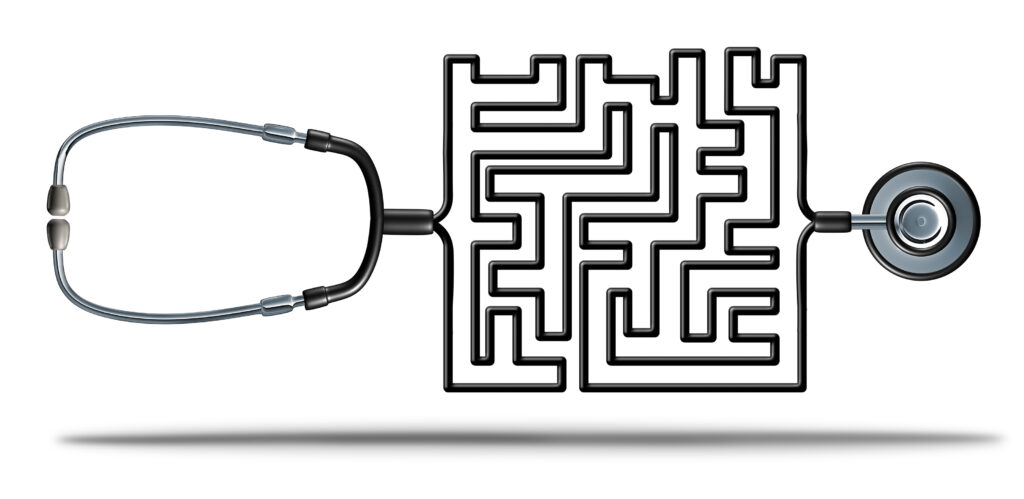Commercializing a new medical device involves navigating a complex landscape of regulatory, payer and provider…
Reimbursement Q&A: Medical Device Coding and Coverage
Understanding coding and coverage mechanisms are essential to developing a reimbursement strategy for a new medical technology. These Q&As address the differences between coding and coverage.

- My device has been cleared by the FDA. Does the regulatory approval guarantee coverage and payment for services using this device?
FDA approval or clearance of a device is necessary to market it in the US. Yet, FDA approval does not automatically qualify the product or procedure for coverage and payment, especially for devices used in outpatient settings. Federal payers, such as the Centers for Medicare and Medicaid Services (CMS) and commercial payers, such as Aetna, United Healthcare, Cigna, and Blue Cross Blue Shield, decide whether to cover the device and/or procedure. Coverage decisions are made by each payer based on multiple factors, such as health technology assessments, clinical data published in peer-reviewed journals, real-world evidence of clinical efficacy, and practice guidelines published by relevant professional societies. - What billing codes are needed for a new medical device? How do I get codes for my product?
The Healthcare Common Procedure Coding System (HCPCS) describes items and services furnished in outpatient settings such as hospital outpatient departments, physicians’ offices, clinical labs, homes, etc.
The HCPCS code set is divided into two principal subsystems:- Level I: Current Procedural Terminology (CPT), an alphanumeric coding system maintained by the American Medical Association (AMA). The CPT codes identify medical services and procedures furnished by physicians and other qualified healthcare providers.
- Level II: A coding system used to identify products and supplies, as well as services lacking CPT codes. Level II codes, commonly referred to as HCPCS codes, are maintained by the CMS.
CPT codes have 3 categories: - Category I – codes describing procedures and services performed by physicians and other qualified healthcare providers. For most codes, allowable payments by Medicare are established by the CMS, based on recommendations of the AMA Relative Value Scale Update Committee (RUC).
- Category II – performance measurement codes, supporting data collection for services that have been recognized as contributing to positive health outcomes. Use of these codes is optional, no monetary value attached.
- Category III – temporary codes to track the utilization of new or emerging medical technologies, services, or procedures. Coverage and payments are determined by each payer.
CPT codes are updated on an annual basis. To request a new or revised CPT code, sponsors must submit a code change application to the AMA CPT Editorial Panel. The Panel, which meets three times a year, decides on the outcome of the CPT code application. The meeting dates and code application deadlines can be found on the AMA’s website.
Applications for new or revised HCPCS codes are reviewed twice a year by the CMS HCPCS Workgroup.
- What are ICD-10 codes, and why are they important to me as a medical device manufacturer?
The International Classification of Diseases (ICD), developed by the World Health Organization (WHO), provides a set of codes to classify diseases, injuries, procedures, and services. All US healthcare entities covered by the Health Insurance Portability and Accountability Act (HIPAA) regulations are mandated to use ICD-10 codes for medical coding. ICD-10-CM describe diagnosis codes and ICD-10-PCS describe procedure codes. Since these codes form the basis on which hospitals and clinicians can bill for provided services, it is important for medical device manufacturers to identify the appropriate ICD-10 codes for services using their devices and develop reimbursement resources to educate their customers. - Our device has been granted a CPT code. Will Medicare now cover the associated procedure or service?
It is a common misconception that being granted a CPT code guarantees coverage. While CPT codes are issued by the AMA, coverage and payment for the service using the device are determined by payers. Once a CPT Category I code is issued for a particular procedure or service, AMA’s RUC provides recommendations to CMS on the relative values of the resources necessary to perform the procedure/service. According to Section 1862(a)(1)(A) of the Social Security Act, Medicare must provide coverage for items or services that are “reasonable and necessary for the diagnosis or treatment of illness or injury or to improve the functioning of a malformed body member.” Coverage is predicated on multiple factors, including expectation of improved outcomes, determinations that the benefits outweigh risks, and clinical evidence showing positive outcomes in the Medicare population. - Does CMS coverage for my medical device ensure coverage by commercial payers?
Although commercial payers consider coverage decisions by Medicare, coverage by such payers is not guaranteed. Commercial payers base their coverage decisions on several factors, such as evidence-based health outcomes, improvements in net health outcomes, benefit equivalence between the new technology and established alternatives, demonstrated improvements outside investigational settings, cost effectiveness, etc. Device manufacturers seeking coverage for services using their products should be prepared to provide compelling evidence of the utility, clinical benefits, and cost effectiveness of their device. - When should my company start planning its reimbursement strategy?
Medical device companies would be well advised to integrate reimbursement strategies into their business plan early in the device development process. This is a critical aspect as coverage decisions are vital to the commercialization and financial success of the company. Often, product performance, workflow, regulatory and reimbursement considerations are intertwined with decisions in one area impacting the other. Planning for clinical trials depends on a clearly defined strategy, allowing for evidence development supporting regulatory, reimbursement and marketing objectives. The marketing strategy should be built in tandem with reimbursement and regulatory strategies to reduce the time to market and to maximize the chances of market adoption.
Image: Illustration 92082079 © Skypixel Dreamstime.com

